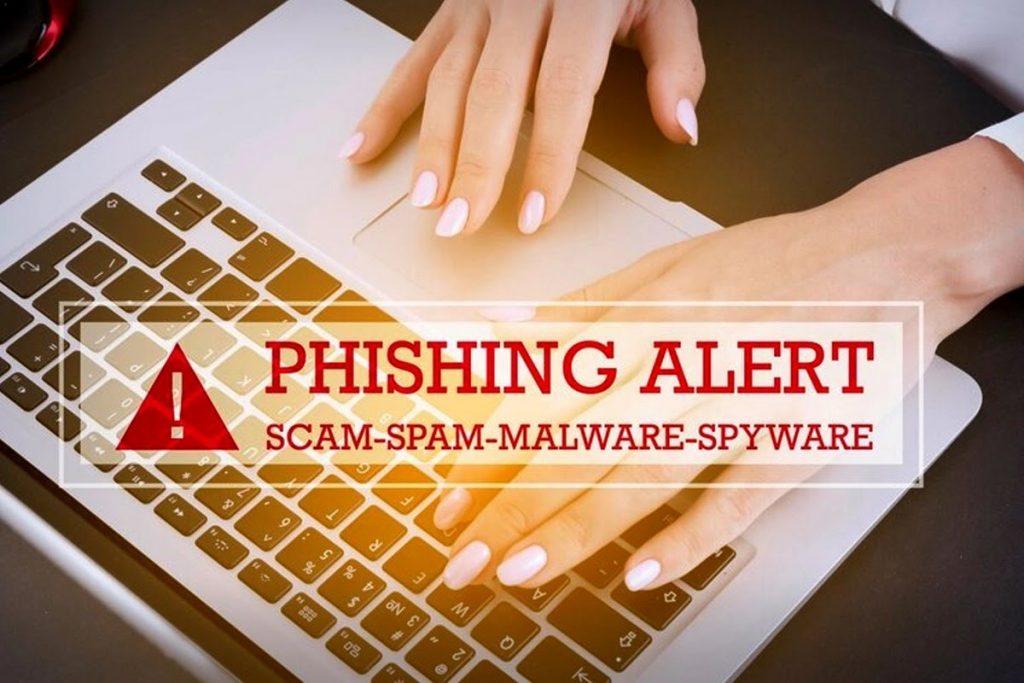
VoIP has made telephony communication more convenient than ever. With this technology, you can easily communicate with anyone anywhere seamlessly. However, despite the convenience, we have seen many security issues in its operations. This is where VoIP security comes into the picture.
When we mention VoIP, we talk about millions of users’ personal information and sensitive data. Hence, VoIP security and privacy have become a sensitive topic.
So, in this blog, we will cover why VoIP security matters and how you can safeguard your conversations in the digital age. Let’s start with the definition of VoIP.
Table of Contents
What is VoIP (Voice over Internet Protocol)?

Voice over Internet Protocol is a modern technology that enables communication over the Internet (both voice and video). With VoIP, users dont require phone lines, physical infrastructure, and hardware to make and receive calls, giving it a competitive advantage over the traditional phone system.
In short, using VoIP, you can easily call anyone; all you need is a good internet connection and a device that supports an internet connection.
Threats to VoIP Security

Despite the growing popularity of VoIP in communication, there has been an increase in the threats to data protection, privacy, and security. Let’s look at some of them in more detail.
A. Eavesdropping and Interception
Eavesdropping is a security threat when unauthorized individuals or entities listen in on VoIP calls or intercept the data packets that carry voice communication. This can happen when attackers use encryption or configured systems, allowing them to capture sensitive conversations. These actions can potentially result in privacy breaches and data theft.
B. Call Spoofing and Identity Theft
Call Spoofing is when someone disguises caller ID information to hide their identity during calls. This threat involves manipulating caller ID information to display a trusted number for malicious purposes. Attackers can pretend to be users, organizations, or authorities, leading to scams or identity theft.
C. Denial of Service (DoS) Attacks
The DOS attack aims to shut down a machine or make a network inaccessible. These attacks aim to disrupt VoIP services by overwhelming the network or system with traffic or requests. Such attacks can cause service outages.
D. Malware and Phishing Attacks
Malware and phishing attacks are security threats that involve stealing user’s data. Attackers may distribute malware through attachments or links in VoIP messages, compromising user devices and systems. This way, the attackers can easily access users’ credentials and other important information.
E. Unauthorized Access and Data Breaches
Last, using VoIP also involves the threat of unauthorized access and data breaches. Hackers may exploit vulnerabilities in VoIP infrastructure to gain sensitive information such as call records, voicemails, and user credentials by using software and other tools.
👉 You might also be interested in No One is Safe from the Data Breach Epidemic
VoIP Security Best Practices

There are many security issues concerned with the proper use of VoIP. However, simple steps can prevent and significantly address these issues. Here are some best practices for VoIP security.
A. Strong Passwords and Authentication
Users must use strong passwords for their VoIP. Moreover, it is also recommended that the users change their password daily. They should use two-factor authentication (2FA), in short, users must provide two forms of identification before accessing any data, information, and credentials.
B. Encryption Techniques
Another great way to improve your VoIP security is by implementing encryption techniques. Data can be scrambled via encryption, so only authorized individuals can decode it. There are two recommended means of encryption techniques.
- Transport Layer Security (TLS): TLS ensures that hackers and attackers cannot see the data you send over the Internet. Ensure that your VoIP communication remains confidential and secure during transmission by utilizing TLS to encrypt the control data.
- Secure Real-time Transport Protocol (SRTP): SRTP uses various encryption and authentication means to avoid threats like DoS. It is recommended that the users incorporate SRTP for encryption to make the voice data resistant to eavesdropping and interception.
C. Firewall and Intrusion Detection Systems (IDS)
A firewall is a security protocol that analyzes incoming and outgoing access and network data requests before filtering them. Similarly, IDSs (Intrusion Detection Systems) monitor network traffic for suspicious activities.
Users are recommended to use firewalls that filter incoming and outgoing VoIP traffic. Additionally, implementing Intrusion Detection Systems (IDS) can provide real-time detection and response capabilities to promptly identify and address any activities.
D. Regular Software Updates and Patch Management
Regular updates are one of VoIP’s most crucial yet overlooked security measures. Each software and hardware update comes with a security patch and bug fix. So, ensure you regularly update your software and hardware for utmost security.
E. Network Segmentation
Network segmentation is a simple process of dividing a single network into multiple small parts for security measures. You can separate your VoIP network from essential systems to prevent and minimize the consequences of a security breach. You can impede attackers from navigating through your infrastructure by implementing network segmentation.
F. VoIP-specific Security Software and Services
Most VoIP providers have inbuilt security software. However, you can always consider implementing VoIP-specific security software and services to reinforce your safety. For example, you can use software applications like SolarWinds VoIP and Network Quality Manager, Site24x7 VoIP Monitoring, and VoIP Spear to get additional security from various threats.
G. Employee Training and Awareness
Lastly, you must train your employees to use VoIP best as a business owner. It is essential to invest in training to improve employee understanding of the security risks associated with VoIP. Initiate a culture of security by informing your employees about security threats related to VoIP and equipping them with the knowledge and tools to respond effectively.
👉 You might also be interested in The Need for Data Masking in the Wake of Data Breaches
VoIP Security Solutions and Technologies
As the threat to VoIP use, privacy, and security increases, operators have improved security solutions and technologies. So, some VoIP security solutions and technologies have become prominent in recent years.
A. VoIP Security Appliances
VoIPO security application refers to the hardware applications that check, monitor, and filter incoming and outgoing traffic for malicious activity. These appliances are known for preventing and reducing the cases of DoS (Denial of Service) and intrusion attempts.
B. Session Border Controllers (SBCs)
Session Border Controllers (SBCs) control and secure real-time communication. This solution is essential for preventing toll scams and spoofing. SBCs act as mediators between various VoIP networks to ensure the authenticity of users and secure the flow of data.
C. Voice Encryption Software
Third on the list, we have voice encryption software. It is a solution that encrypts the data to prevent access to unknown or unauthorized users. This solution is critical in preventing threats like eavesdropping and interception of sensitive data and information.
D. VoIP Security Service Providers
Last, we have VoIP security service providers. The VoIP security service provider industry offers specialized services to secure VoIP infrastructure. These providers offer various security services, such as fraud detection, call authentication, and real-time monitoring.
Regulatory Compliance and VoIP Security
Compliance with regulations plays a significant role in the security framework of VoIP (Voice over Internet Protocol) communications. It is vital for organizations using VoIP technology to understand and abide by compliance obligations. Let us look at some of the regulatory compliance and VoIP security.
A. Legal and Compliance Requirements
There are many legal and compliance requirements for the operation of VoIP. The policy and requirements can vary depending upon the states and nations. However, there are some standard requirements that VoIP operators worldwide need to fulfill, like GDPR and HIPPA.
The General Data Protection Regulation (GDPR) is a compliance initiated by the European Union (EU) for the protection and ethical handling of personal and sensitive data of the users. The Health Insurance Portability and Accountability Act (HIPAA) is concerned with the data protection of patients.
B. Impact of Compliance on VoIP Security Measures
Legal and compliance have had a significant impact on VoIP security measures. Here is a list of some common ones:
- Access and control: VoIP operators must meet compliance and implement user authentication mechanisms and Role-based access control (RBAC) to ensure that only authorized individuals can access VoIP systems and data.
- Data Privacy: According to compliance regulations, VoIP operators must securely store call records and logs following privacy policies.
- Data Encryption: The compliance requirement mandates data encryption during transmission and storage. Hence, protocols like TLS and SRTP are necessary.
- Regular Monitoring: VoIP systems must be audited and monitored frequently to identify security breaches and unauthorized activities to meet compliance.
Future Trends in VoIP Security
The VoIP security threats are a dynamic sector, as the VoIP providers and operators address the security threats, attackers and hackers look for new ways to manipulate the data and security system. So, here are some major emerging threats and the advanced VoIP security technology.
A. Emerging Threats and Challenges
With the current advancements in VoIP security, we can anticipate that the ongoing threats might become amplified problems. For example, the attackers and hackers might take eavesdropping, Denial of Service (DoS) attacks, and phishing to the next level by finding vulnerable loopholes in VoIP security.
Moreover, considering the speed of advancement, VoIP might integrate with Artificial Intelligence, automation, and the Internet of Things (IoT), which might bring new challenges that are unknown at the current stage. So, operators need to take proactive steps to address any problems.
B. Advancements in VoIP Security Technology
Various technologies are being developed to counter emerging threats in VoIP security. Encryption techniques will be improved, ensuring end-to-end voice and multimedia data security. AI and machine learning will enhance VoIP security, enabling real-time detection and response.
Authentication mechanisms and identity management will also be improved for VoIP networks. VoIP services increasingly integrate with cloud and mobile technologies, requiring specialized security solutions.
Conclusion
In short, VoIP security has become one of the most sensitive topics, considering that VoIP has been revolutionizing the communication industry. As VoIP operates via the internet, the risk of eavesdropping, phishing, unauthorized access, and DoS attacks has been increasing operators and businesses need to take necessary steps to tackle and address such threats.
You can go through the common VoIP threats and best practices for avoiding them, as mentioned above, to minimize the issue of data protection, data privacy, and security. Lastly, assess your business needs to implement the best VoIP security solutions.





More Stories
11+ Best ThePiratebay3 Sites – Ultimate Pirate bay Alternatives
7movierulz iBomma – 11 Best Alternatives to Download & Watch latest Telugu Movies
How to Spam a Phone Number (7 best apps & services) with call, texts to Get Revenge?